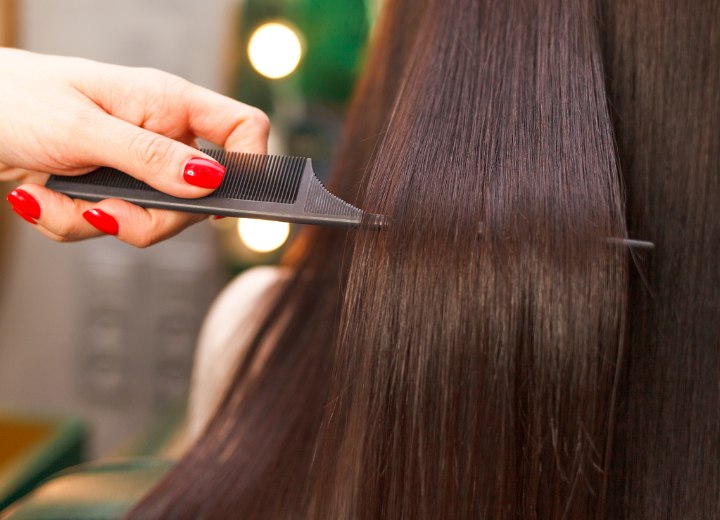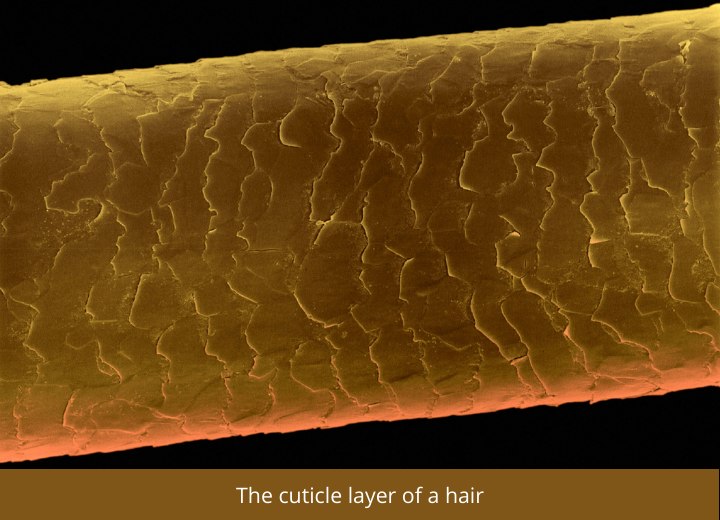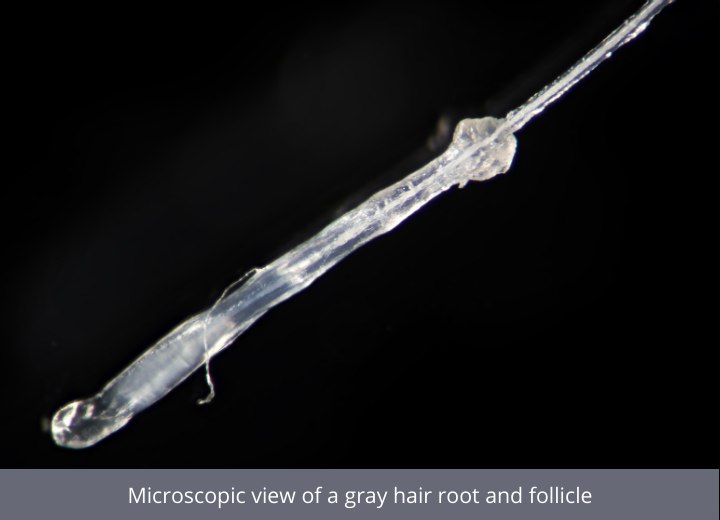Keratin

A: Keratin is a strong protein that plays a crucial role in forming the structure of hair, nails, and the outer skin layer in mammals, including humans. This protein provides toughness, elasticity, and protection. When it comes to hair, keratin is essential for determining its texture, strength, elasticity, and overall appearance, helping it resist damage and breakage.
In the context of hair, keratin production begins at the hair follicle's root, where keratinocytes continuously generate new keratin protein. As the hair shaft grows, these cells move up the follicle, adding layers of keratin to the shaft and forming the visible hair fibers.
Hair consists of three keratin layers: the cuticle, cortex, and medulla. The outermost layer, the cuticle, is composed of flattened, overlapping scales that create a protective barrier for the hair shaft. The cuticle also plays a role in retaining moisture, contributing to a smooth and glossy appearance. The medulla, the innermost layer, is present in specific hair types.

Let's talk about Keratin and Hair Color:
Our hair color is determined by a pigment called melanin, produced by cells called melanocytes. These cells create and transfer melanin to the nearby keratinocytes. As our hair grows, the melanin becomes part of the cortex.
There are two types of melanin crucial for hair color: eumelanin and pheomelanin. Eumelanin is responsible for darker hair shades like brown to black, while pheomelanin produces lighter, reddish-yellow hues. The balance between these two in the cortex determines our hair color.
However, it's not just about the amount of melanin; distribution matters too. Hair filled densely with melanin appears darker than less densely filled hair. As we age, our hair follicles' melanocytes become less active and produce less pigment, leading to gray or white hair.

The makeup and arrangement of keratin in our hair can differ based on factors like genetics, age, diet, and surroundings. For instance, African-American hair usually has tightly packed and more complex keratin, giving it a unique texture and curl. Changes in keratin due to aging or illness can also alter hair texture and appearance.
Beyond structure, keratin is crucial for healthy hair. Frequent heat styling, like blow-drying and using flat irons, can break down keratin bonds, causing damage, breakage, and split ends. Proper hair care, including the use of products designed to protect and strengthen keratin fibers, can prevent this.
Keratin Shortage:
Insufficient keratin can lead to dry, brittle hair prone to breakage. A deficiency weakens the hair shaft, making it struggle with regular brushing, combing, and styling. This results in increased breakage and split ends.
Moreover, a lack of keratin can bring about dryness and lackluster hair. When there's not enough keratin, the hair struggles to retain moisture, leading to dry, frizzy, and unruly strands. This is particularly noticeable in people with curly hair, which tends to be naturally more prone to dryness.
Several factors, such as genetics, age, stress, illness, and exposure to environmental toxins, can contribute to keratin deficiency. Additionally, a diet lacking essential vitamins and minerals may lead to insufficient keratin.
Keratin Treatments:
Keratin-based hair treatments are gaining popularity for repairing and strengthening damaged hair. These treatments typically involve applying a keratin-based solution to the hair, sealed in with heat. Keratin in hair care products can come from various sources, including both animals and plants. The most commonly used source is animal-based, specifically from sheep wool and feathers.

Similar to sheep wool, feathers are rich in keratin, and when broken down, they become a soluble form that the hair readily absorbs. This type of keratin is frequently used in hair treatments to boost strength, elasticity, and overall hair health.
Beyond animals, we can also get keratin from plants like soy, corn, and wheat. These plant-based sources, known as "plant-based peptides," are thought to offer similar benefits to animal-derived keratin. However, some experts debate whether plant-based keratin is as effective as the animal-derived kind, suggesting that the structure of plant-based keratin might not closely match that of human hair.
When selecting a hair care product with keratin, it's crucial to opt for those containing high-quality, hydrolyzed keratin. This type of keratin is believed to be the most effective in promoting hair health.
©Hairfinder.com
See also:
How to analyze your hair
What is hair made of and how does it grow?